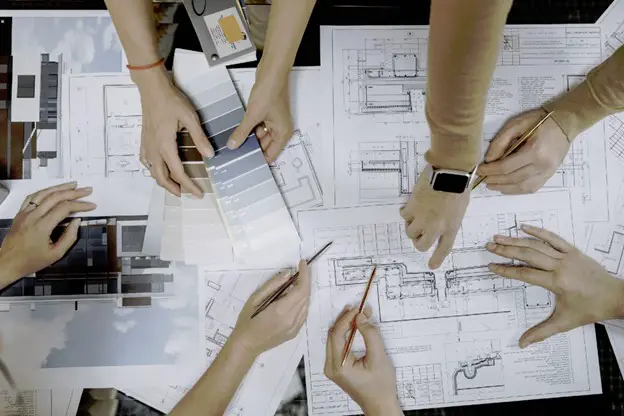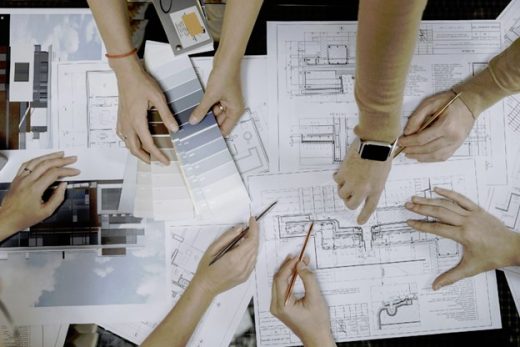3 strategies to improve team communication in architectural projects, Permanent house refurb design guide
3 Strategies to Improve Team Communication in Architectural Projects
11 July 2024
Architectural projects are defined by the sheer number of people they involve, with even the smallest scale examples usually requiring the input of teams and stakeholders with various roles, responsibilities and backgrounds.
With that in mind, decision-makers and those charged with pushing the project forward must make communication a core concern. If you feel that this is falling short of expectations, stick around and we will outline actionable strategies that will change things for the better.
Adopt Advanced Collaboration Software
There’s a huge overlap between communication and collaboration, so it goes without saying that specialized software that facilitates both simultaneously is innately useful for any architectural project.
Here’s what the latest tools in this category can offer:
- Centralized Information: Platforms like ActiveDraft offer a centralized hub where all project details, updates, and revisions are stored. That means no more hunting through email chains to find the latest floor plan.
- Real-Time Updates: With real-time syncing, any changes made by team members instantly reflect across all devices. This ensures that every stakeholder always has access to the most current information.
- Integrated Communication Tools: Many platforms, including the likes of Miro and Asana, integrate chat functions, video calls, and task management tools within one interface. As a result, teams can discuss design modifications or schedule deadlines without switching between apps.
- Enhanced Visual Sharing: Architectural designs are complex, so seeing them visually helps avoid misunderstandings. Features like 3D model viewing allow teams to review and critique designs collaboratively.
What this type of software does especially well is bridge the gap between architects and other project participants, breaking down barriers which are well established in this context. One report found that 40% of on-the-ground workers feel communication is a long way down the list of priorities, so tools like this must be rolled out to reverse such misconceptions.
Establish Clear and Measurable Goals
Without clear, measurable goals, architectural projects run the risk of veering off track. Thankfully, when everyone knows their responsibilities and the project’s direction, communication can occur with fewer hitches.
To do this:
- Define Project Milestones: Break down the project into key phases. For example, outline stages such as initial concept design, schematic design, detailed drawings, and final approval.
- Use SMART Criteria: Goals should be Specific, Measurable, Achievable, Relevant, and Time-bound. Instead of saying “complete the floor plan,” specify “finalize floor plan by June 30th with all client revisions”.
- Assign Responsibilities: Clearly designate tasks to team members. Tools like Trello can help assign specific duties like “create structural models” to designated architects or engineers.
- Regular Progress Reviews: Conduct weekly or bi-weekly check-ins to assess progress towards these goals. This helps catch potential issues early before they derail the entire timeline.
Clear objectives keep your team aligned and motivated. This is necessary not just for day-to-day communications, but also to avoid budget snafus and deadline issues. With just 8.5% of projects coming in under the wire in either regard, this is advice that the majority of industry professionals need to follow.
Encourage Cross-Disciplinary Understanding
In any project, promoting cross-disciplinary understanding makes sense – and this advice applies across all industries, not just architecture and construction. Put simply, it ensures that everyone, from architects to engineers, is on the same wavelength. It involves:
- Interdisciplinary Workshops: Organize workshops where different specialists share insights about their roles and challenges. For example, having structural engineers explain their constraints to designers fosters mutual respect and better collaboration.
- Integrated Project Delivery (IPD): IPD approaches as part of the planning process, like those used by firms such as Perkins&Will, involve all stakeholders early in the design process. This promotes a cohesive workflow and aligns goals across disciplines.
- Shared Language Glossaries: Develop a glossary of key terms used by various team members. This helps avoid jargon confusion and ensures that everyone understands critical project-specific language.
- Cross-functional Teams: Create mixed teams for specific project phases so that architects work alongside MEP (Mechanical, Electrical, Plumbing) engineers or landscape architects during crucial planning stages.
The aim here is to make your architectural projects more coherent and efficient. And aside from the productivity benefits, it will boost morale as well.
The Final Word
A mixture of suitable software, smartly selected goals and an eagerness to get all team members on the same page from the start will turn the potential chaos of an architectural project into a cohesive communication strategy. Once you understand this and implement the right tools and techniques accordingly, a multitude of benefits will be unlocked.
Comments on this guide to 3 strategies to improve team communication in architectural projects article are welcome.
Home Renovation
Home Renovation Posts
Making Your Home Renovation Hassle Free
Before Taking on a Home Renovation Project
Building Articles
Residential Architecture – selection:
Comments / photos for the 3 strategies to improve team communication in architectural projects advice page welcome.






